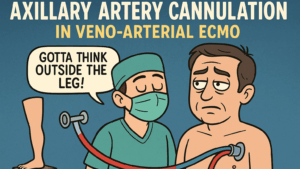Cardiac surgery patients frequently require transfusions due to significant blood loss associated with cardiopulmonary bypass (CPB). Recent clinical interest has focused on improving blood management through various residual volume processing techniques. This review synthesizes findings from four studies assessing methods including centrifugation (CF), modified ultrafiltration (MUF), off-line MUF (Hemobag, HB), and online MUF.
Clinical Rationale and Background
Intraoperative transfusions carry risks such as transfusion-related lung injury, immune modulation, and infection. Therefore, optimizing blood salvage strategies post-CPB has become a focal point of cardiac surgical research. Traditional CF methods salvage red blood cells but discard valuable plasma proteins and platelets, while hemoconcentration techniques preserve these components.
Study Comparisons and Key Findings
- Centrifugation vs. Multiple-Pass Hemoconcentration (MPH):
McNair et al. compared CF and MPH in a randomized controlled trial involving 61 adult patients. While hemoglobin levels post-surgery were similar between groups, the MPH group had significantly higher albumin, total protein, fibrinogen, and platelet counts. Importantly, MPH patients exhibited reduced allogeneic transfusion needs and improved fluid balance. - Online MUF vs. Off-Line MUF vs. Centrifugation:
In another prospective study by McNair et al., 99 patients were divided into online MUF, off-line MUF, and CF groups. Off-line MUF (equivalent to HB) had the lowest transfusion rates (6.7%), followed by CF (14.7%) and online MUF (22.9%). Although online MUF showed the highest immediate hemoglobin recovery, fluid shifts appeared to inflate this benefit. Weight-adjusted analyses favored off-line MUF for actual hemoglobin retention and lowest fluid retention. - National Database Review – Hemobag Superiority:
Baeza et al. analyzed 77,591 adult cardiac surgeries from the SCOPE registry. Five techniques were assessed: CF, UF, WB reinfusion, HB, and no processing. HB was associated with the lowest transfusion probability (0.79%) and the most favorable hematocrit recovery. Conversely, no post-CPB processing showed the highest transfusion rates. HB use reduced transfusion odds by half compared to CF, highlighting its clinical superiority. - Meta-Analysis of MUF Effectiveness:
A comprehensive meta-analysis by Low et al. examined 13 randomized controlled trials involving 1,236 patients. MUF significantly increased post-CPB hematocrit, reduced chest tube drainage, decreased transfusion volumes (by ~0.73 units), and shortened ICU stay duration. Importantly, no increase in mortality or complications was observed. This solidified MUF’s status as both effective and safe for adult patients.
Mechanistic Insights
Ultrafiltration techniques concentrate all formed elements of blood—red cells, platelets, and plasma proteins—without discarding key components like CF does. This preserves hemostatic function and reduces inflammation. The Hemobag system specifically enhances coagulation profiles by delivering a whole blood-like reinfusion containing high hematocrit and protein levels.
Economic and Operational Implications
While MUF and HB systems may require slightly longer setup or processing time than CF, they offset this with reduced transfusion product use and shorter ICU stays—key drivers of hospital cost. Additionally, reduced blood product exposure may lower risks of transfusion-related adverse events and rehospitalizations.
Clinical Recommendations
The evidence consistently supports incorporating MUF—especially off-line MUF/Hemobag—into routine practice for adult cardiac surgery involving CPB. Institutions should evaluate their postoperative protocols to integrate these more biologically preserving, cost-effective, and outcome-enhancing techniques.
Conclusion
Across multiple studies and thousands of patients, MUF and Hemobag techniques have emerged as superior to centrifugation in managing residual CPB blood volume. These methods result in better postoperative hematocrit, less bleeding, fewer transfusions, and shorter ICU stays. As the surgical community prioritizes outcomes and cost-efficiency, these advanced ultrafiltration strategies deserve widespread implementation in adult cardiac surgery protocols.







